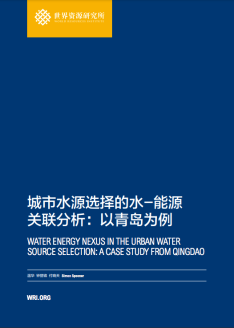Water Energy Nexus in the Urban Water Source Selection: A Case Study from Qingdao
This report evaluates energy requirement of urban water supply from all potential source water types (including surface water, groundwater, inter-basin transfer and unconventional water resources such as desalination and reclamation). Based on scenario study, it also provides recommendations to policymakers on how to incorporate climate considerations into urban water strategy and secure a sustainable, low-carbon water supply for the future.

Water and energy are inextricably linked. With rapid urbanization and increasing expectations on water quality and exploitation of unconventional water resources, energy requirement of the urban water system may upsurge and subsequently raise greenhouse gas emissions. Through a case study in Qingdao, a coastal city in eastern China, the project reveals the following findings:
1) Like many other cities facing water shortage, the gap between Qingdao’s water demand and water resources will continue to grow along with socio-economic development, the biggest contributor to this will be the growth in urban domestic water use.
2) When unconventional water resources (including rainwater harvesting, wastewater reclamation and seawater desalination) become unavoidable, choices of source water will have a direct impact on energy consumption and carbon emissions of the urban water system. In Qingdao, energy required to treat the water to acceptable standards follow the order of local surface water < water diversion (Yellow River) < groundwater < reclamation < water diversion (Yangtze River) < brackish water desalination < seawater desalination. Of all the unconventional water sources, reclaimed water is the best in terms of carbon emissions and cost.
3) Cities should consider introduce carbon accounting and energy management into its water supply planning to help reduce the carbon footprint of urban water system.
4) In addition to cost and supply continuity, cities need to consider the type of source water, energy consumption for unit water supply, carbon emissions, and environmental risks when developing its water strategy.
5) Before tapping unconventional water resources, cities should evaluate its water tariff and prioritize water saving measures.